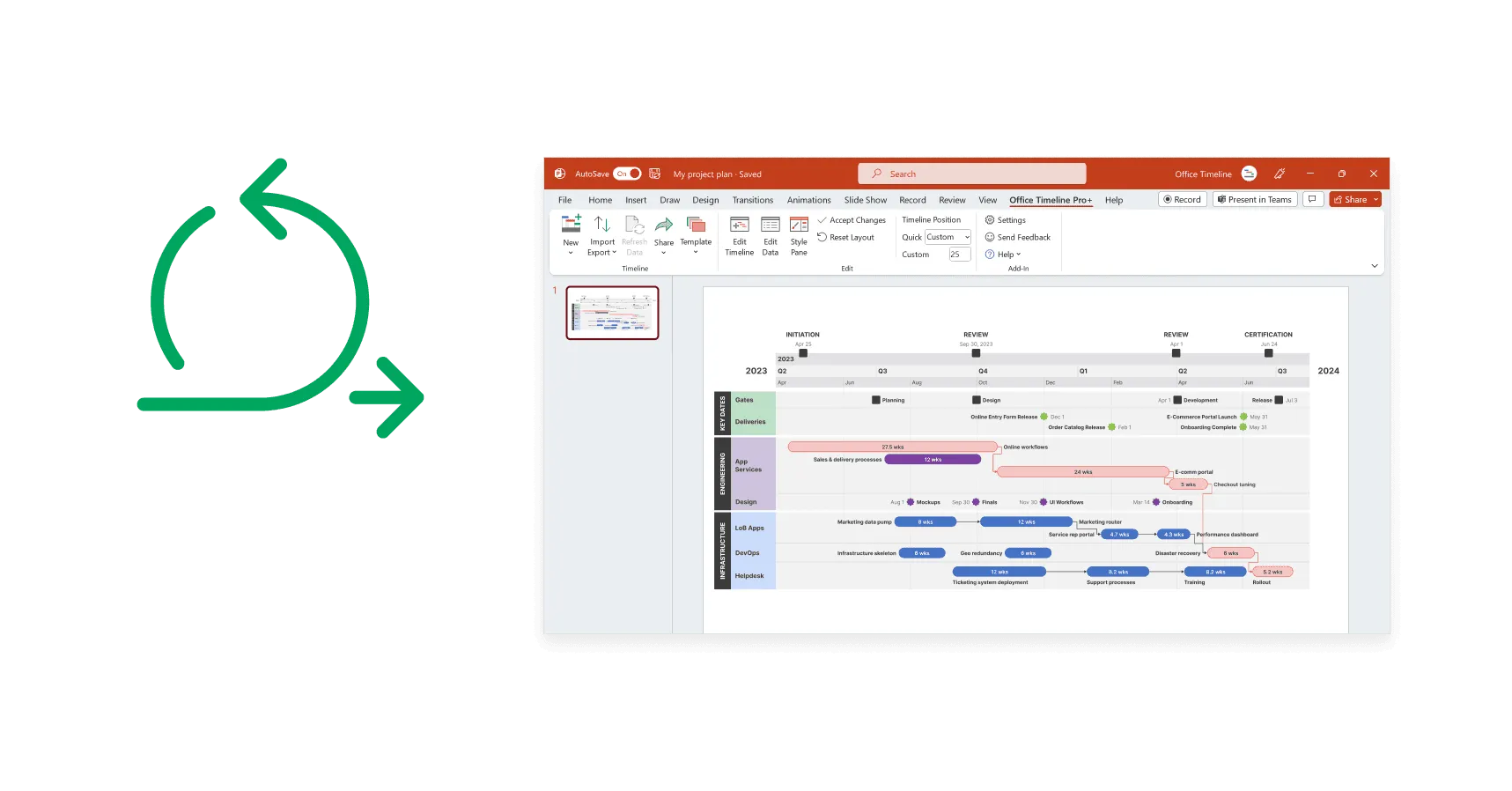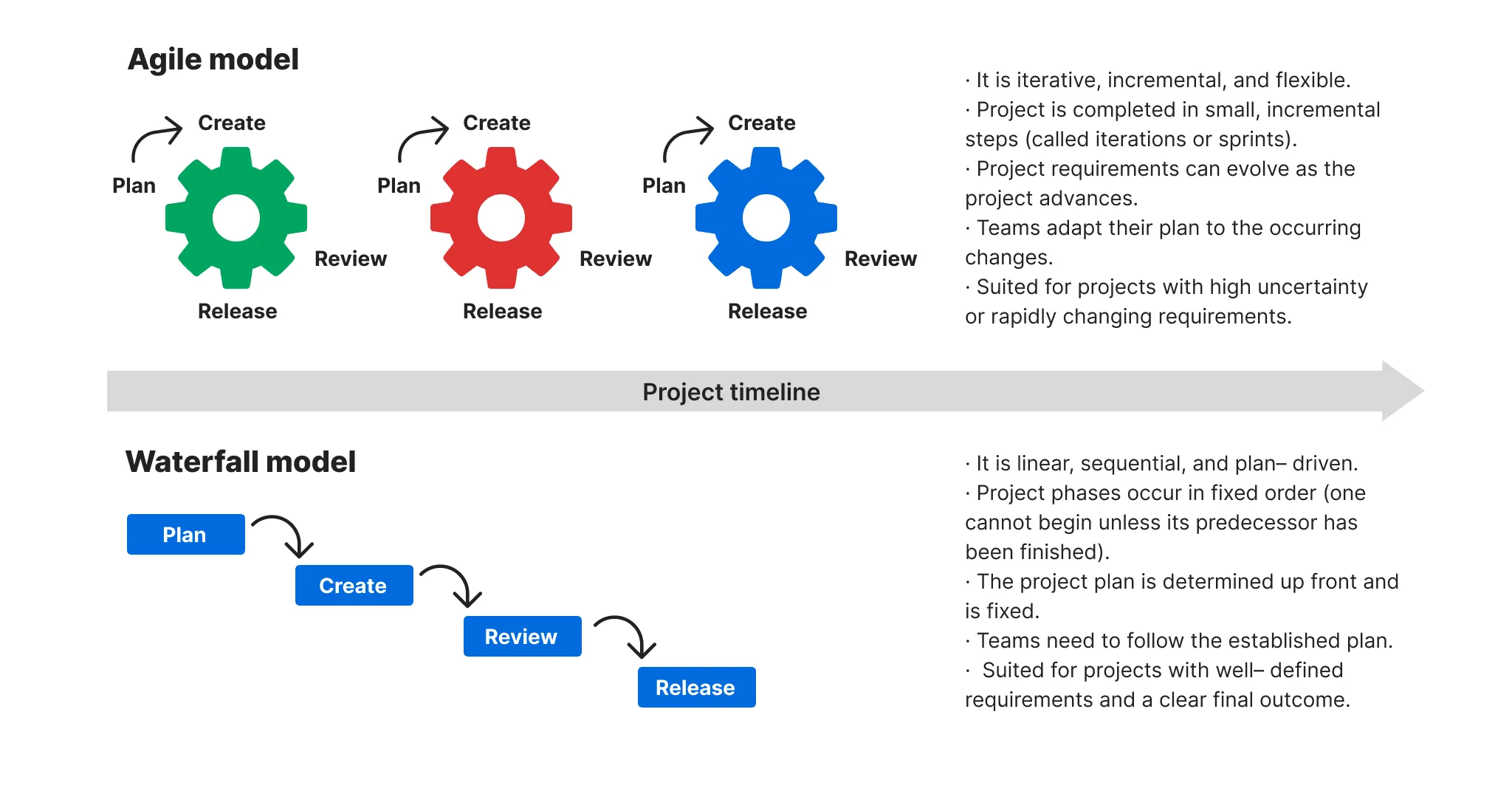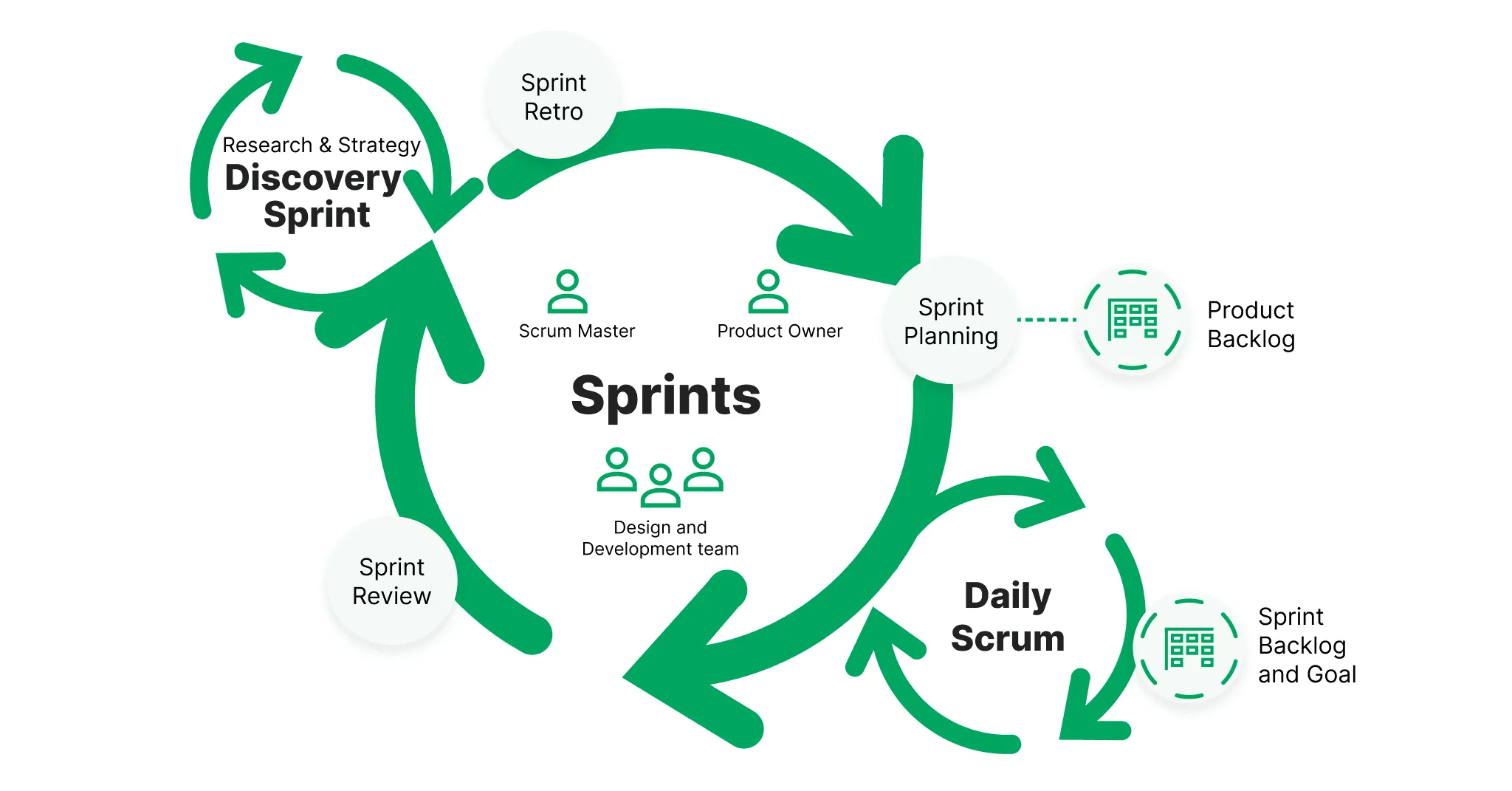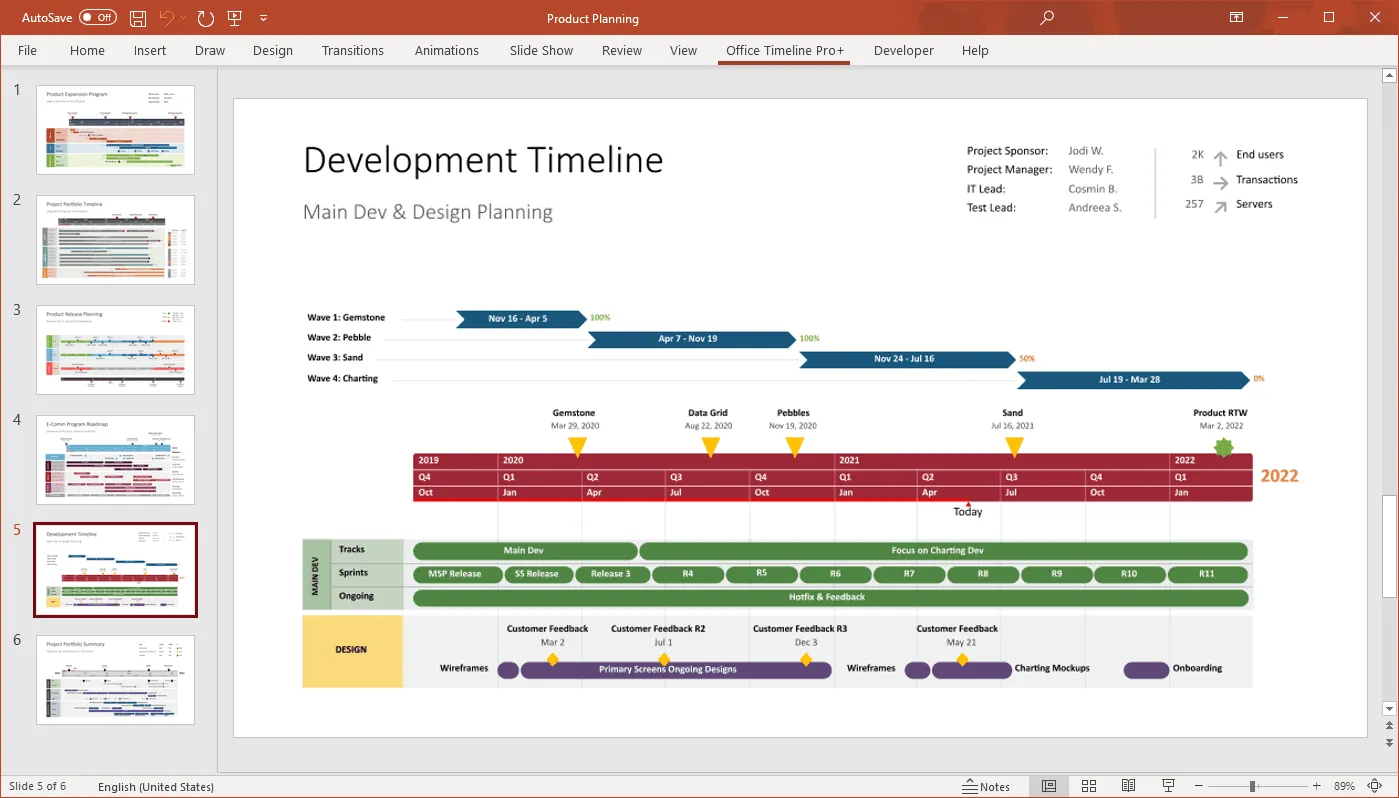What is Agile project management?
Agile project management is an incremental, non-linear approach to planning and managing work. Instead of one big, rigid plan, projects are broken into smaller cycles called sprints (or iterations).
This way of working focuses on:
- Frequent value delivery through small, manageable batches;
- Clear process visualization for full transparency;
- Close collaboration with the customer at every stage;
- Fast feedback loops that guide continuous improvement.
Together, these principles help teams act on feedback quickly, adapt during each sprint, and produce higher-quality outcomes. Agile is especially popular in software development because it improves predictability and risk control – but its flexibility makes it useful across industries.
In short, Agile project management is more than a method; it’s a mindset for collaborative problem-solving that keeps projects moving and responsive to change.
The Agile Manifesto: values and principles
The Agile Manifesto for Software Development (2001) laid out a new way of working, born as a reaction to heavy, plan-driven methods that left little room for surprises.
Traditional approaches locked teams into strict upfront plans, reducing flexibility and autonomy when change was inevitable. Software development, where uncertainty is constant, needed a different playbook.
The Agile Manifesto introduced a framework based on:
- Shorter development cycles (sprints),
- Iterative processes,
- Continuous feedback and testing.
At its heart, Agile encourages teams to:
- Prioritize people over processes to deliver the most value to end users.
- Release working products early and often, even if imperfect.
- Stay aligned through collaboration and trust.
Although born in software, these values are now applied across many fields – from product development to marketing – wherever adaptability and teamwork matter.
Agile methodologies in practice
Agile isn’t one-size-fits-all. Instead, it includes a family of methodologies, each with its own practices and strengths:
- Scrum – Teamwork, accountability, and iterative progress in time-boxed sprints.
- Kanban – Visual workflows, limited work in progress, and improved flow efficiency.
- Extreme Programming (XP) – Practices like pair programming, test-driven development, and continuous integration.
- Lean Software Development – Inspired by Lean manufacturing, it focuses on eliminating waste and maximizing value.
Teams can adopt or adapt these frameworks, experimenting to find what fits best. Flexibility is the point.
Agile vs. Waterfall
Both are well-known project management approaches, but they work very differently:
- Agile → Iterative and incremental. Flexible, collaborative, and customer-driven. Best for projects with high uncertainty or changing requirements.
- Waterfall → Linear and sequential. Plan-driven, with scope, cost, and schedule fixed up front. Best for projects with clear, stable requirements.
Agile thrives in dynamic environments. Waterfall works when predictability rules.
Best practices in Agile project management
To implement Agile effectively, teams should focus on these core practices:
- Prioritize customer involvement – Engage customers and stakeholders throughout the project, ensuring regular communication and feedback.
- Build cross-functional teams – Bring together people with diverse skills who can deliver all aspects of the project collaboratively.
- Work iteratively and incrementally – Deliver in small, manageable batches, with each iteration building on the last. This keeps teams responsive to new information.
- Foster collaboration – Use daily stand-ups, sprint planning, and retrospectives to align efforts and strengthen teamwork.
- Visualize progress – Rely on Kanban boards, task boards, or other visual management tools to track work, spot bottlenecks, and adjust quickly.
- Stay flexible – Create an environment where teams can pivot when requirements or priorities change.
- Leverage automation – Use tools for issue tracking, testing, and continuous integration to improve efficiency and quality.
- Commit to continuous improvement – Regularly reflect on processes and outcomes to identify better ways of working.
Plan Agile projects visually
Use Office Timeline to keep Agile projects clear and on track with simple, adaptable visuals in PowerPoint.
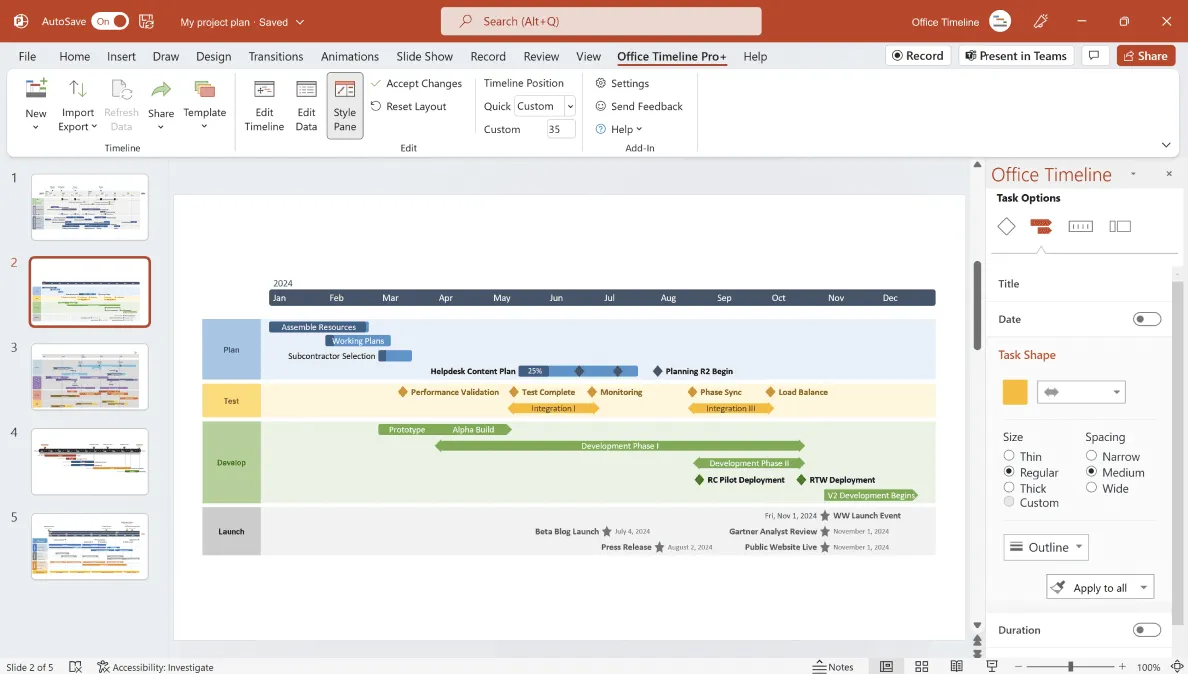
What are Agile project management tools?
Agile tools are software applications that support an Agile way of working. They help teams manage workflows at a steady pace while staying collaborative and flexible.
Common categories include:
- Project management tools – Plan, manage, and monitor sprints effectively.
- Task management tools – Track and organize individual tasks and subtasks.
- Collaboration tools – Enable smooth communication between team members and stakeholders.
- Testing tools – Validate products and maintain quality.
- CI/CD tools – Automate building, testing, and deploying software.
- Metrics and reporting tools – Measure progress and identify improvement areas.
- Scheduling and time-tracking tools – Create clear schedules, track effort, and manage time.
Key Agile roles and components
Two fundamentals of Scrum (one of the most widely used Agile methodologies) are the Scrum master and the sprint.
What is a Scrum master?
A Scrum master is a facilitator and servant leader who helps the team follow Agile practices. Unlike traditional project managers who handle budgets, scope, and staffing, Scrum masters focus on enabling the team to succeed.
Typical responsibilities include:
- Facilitating Scrum ceremonies (Sprint Planning, Daily Scrums, Reviews, Retrospectives),
- Removing obstacles that block delivery,
- Coaching the team on Scrum principles and practices,
- Ensuring adherence to the framework for continuous improvement,
- Shielding the team from outside distractions during sprints,
- Supporting the Product Owner in maintaining and prioritizing the backlog,
- Keeping stakeholders informed and engaged.
What is a sprint?
A sprint is a time-boxed period (1–4 weeks) during which a set of work is completed and made ready for delivery. The goal is to create a potentially releasable product increment, demonstrated to stakeholders at the end of the sprint.
A sprint typically includes:
- Sprint planning – Select and assign backlog items for the sprint.
- Daily scrums – Short daily check-ins on progress and plans.
- Sprint reviews – Showcase completed work and gather feedback.
- Sprint retrospectives – Reflect on what went well, what didn’t, and how to improve next time.
What is an Agile template?
An Agile template is a predefined format that helps teams visually structure and manage their work. By customizing these templates, teams can stay organized, aligned, and consistent with Agile practices.
There are several types of Agile templates, each serving a specific purpose in the development process. Below are some of the most common examples, with descriptions of how they support Agile workflows.
Product backlog template
A product backlog template helps teams capture and prioritize user stories and requirements for a project. It typically includes columns for the user story, acceptance criteria, priority, and status, giving teams a clear, centralized view of upcoming work.
Sprint backlog template
A sprint backlog template is used to track the work planned for a specific sprint. It typically lists the user story, task, assignee, and status, helping teams stay focused on what must be delivered within the sprint timeframe.
Kanban board template
A Kanban board template lets teams visualize workflows and monitor progress. Commonly structured with “to do,” “in progress,” and “done” columns, it uses cards to represent tasks or user stories, making bottlenecks easy to spot.
Sprint retrospective template
A sprint retrospective template supports review meetings at the end of a sprint. With sections for what went well, what didn’t, and actionable improvements, it helps teams continuously refine their process.
Daily stand-up meeting template
This template provides a simple framework for daily stand-up meetings. Team members can quickly share progress, flag blockers, and outline plans for the day, keeping everyone aligned in just a few minutes.
Burndown chart template
A burndown chart template tracks work remaining against time for a sprint or project. Displayed as a line chart, it helps teams monitor whether they’re on track to meet deadlines and adjust pace if needed.
Agile Gantt chart template
An Agile Gantt chart template shows tasks, timelines, and dependencies in a bar chart format. It provides a high-level view of progress while allowing flexibility for iterative planning – making it useful not only in Agile but across project types.
To explore more pre-built samples that can help you plan, track, and report on projects, visit our project management templates collection.
Frequently asked questions
Below, we provide the answers to some of the most common questions regarding Agile project management.
Agile projects typically move through five phases:
- Envision – Stakeholders align on the problem or opportunity, define goals, and set the project’s direction.
- Speculate – The team researches, generates ideas, and explores solutions to build a high-level plan.
- Explore – Prototypes, user research, and feedback loops guide iterative development.
- Adapt – Teams refine and adjust based on feedback from reviews and retrospectives, ensuring alignment with end-user needs.
- Close – The final product is delivered, lessons are documented, and recommendations are made for future projects.
These phases aren’t strictly linear. Teams often loop back as they learn and refine their understanding.
Not quite. Agile is one approach to managing projects, while project management is the broader discipline of planning, organizing, and delivering work. Alongside Agile, other frameworks include Waterfall, hybrid models, and more.
Yes. Agile includes core PM processes like planning, monitoring, and review – but they’re implemented in a flexible way. Visual management tools such as Kanban boards and ceremonies like sprint planning, daily scrums, and retrospectives keep projects on track.
Originally designed for software, Agile now shapes work in many industries:
- Marketing – Run campaigns in small increments (e.g., social posts), gather stakeholder feedback, and adjust strategy continuously.
- Universities – Use Scrum or Kanban for curriculum development, student projects, or administrative workflows.
- Military – Adapt quickly to shifting circumstances, improve communication, and deliver results in shorter cycles.
- Automotive – Build and test prototypes iteratively, align teams through frequent check-ins, and integrate customer feedback early.
From the Agile Manifesto:
- Individuals and interactions over processes and tools.
- Working software over comprehensive documentation.
- Customer collaboration over contract negotiation.
- Responding to change over following a plan.
- Agile → A project management framework based on iterative, adaptive delivery.
- PMP → A certification from the Project Management Institute (PMI) that recognizes broad project management expertise, based on the PMBOK® Guide.
Every Agile approach rests on five key attributes:
- Transparency – Open communication and shared understanding of progress.
- Customer focus – Delivering not just what’s asked, but what’s truly needed.
- Adaptability – Responding quickly to changing requirements.
- Shared ownership – Empowering teams closest to the work to make decisions.
- Continuous improvement – Learning from each iteration to refine processes and outcomes.
Agile is a flexible, collaborative way of managing projects. Teams work in small batches, visualize processes, involve customers, and integrate feedback early and often.
An Agile methodology is a set of practices and principles for completing projects through sprints or iterations. It emphasizes collaboration with customers and continuous improvement throughout the lifecycle.
Agile stands for Agile software development – a family of methods and practices inspired by the Agile Manifesto. At its core, it’s about iterative delivery, flexibility, and team collaboration.
The term itself comes from the Latin agere (“to do, to act”), reflecting the ability to move quickly and adapt to change.

